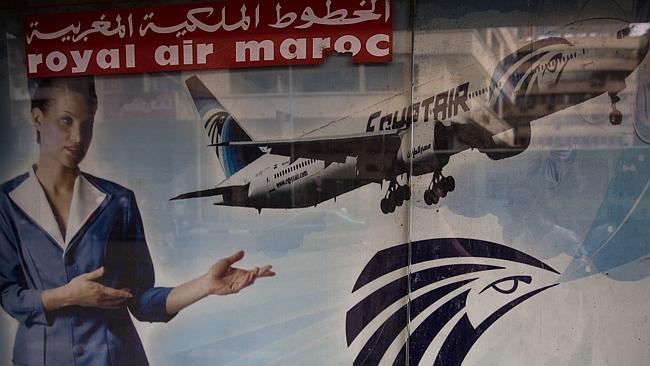Tragedy the latest test for struggling EgyptAir
The crash of EgyptAir Airlines Flight 804 is the latest in a series of crises to hit the state-owned carrier.

The crash of EgyptAir Airlines Flight 804 into the eastern Mediterranean last week is the latest in a series of crises to hit the state-owned carrier.
It will be the biggest test yet for EgyptAir chairman and chief executive Safwat Mosallam, who took the role in March.
The airline, which is Africa’s largest by passengers carried, has demonstrated its ability to weather previous crashes and political upheaval. When tourism to Egypt dried up after the 2011 revolution, the airline successfully courted transfer passengers, ferrying them between Europe and far-flung places in Africa via its Cairo hub to offset the loss of tourism business.
That reach had also kept the airline as a cornerstone of the Star Alliance, where other partners valued EgyptAir’s reach into locations they didn’t serve, a European airline official said. Still, much hinges on the outcome of the probe into the latest crash of the flight from Paris to Cairo.
The cause of the accident that probably killed all 66 people on board is still under investigation. Egyptian officials have said the probe will take time, and initially suggested terrorism was a more likely cause than mechanical failure.
Accident investigators are scrutinising the airline’s staff and maintenance records, the history of the plane and security at the Paris Charles de Gaulle Airport where Flight 804 departed.
While there has been no rush to cancel reservations on regional EgyptAir flights since the tragedy, according to travel agents, there is an overarching concern about the impact on the country’s tourism.
This is a reversal of fortunes for an airline that with a vision to capitalise on the rise in global travel eight years ago, was the first Arab airline to join the lucrative Star Alliance that includes United Continental and Deutsche Lufthansa. The company invested in new Boeing and Airbus jets. The government invested in new airports to help foster growth.
However, the political upheaval that led to the ousting of Egypt’s longtime dictator ushered in a period of instability that dented the state-owned airline’s fortunes. Tourism plummeted and ticket sales suffered.
Since 2011, EgyptAir is said to have incurred losses of over $US1 billion ($1.4bn), according to state media reports. Last year, the airline’s CEO was ousted by the government over allegations of mismanagement.
Even before the revolution, the airline faced some tribulations. The European Union in 2009 raised concerns about the airline’s safety performance and questioned the steps taken to fix the problems. Inspections of EgyptAir planes at European airports found 240 deficiencies, some deemed serious, according to reports. Egyptian authorities had to provide monthly reports to their European counterparts on changes, and it took more than a year for the European Union to drop its public complaints.
The airline’s previous fatal crash was in 2002 when one of EgyptAir’s Boeing 737 planes crashed on landing at Tunis’s main airport, killing 14 of the 62 people on board. Before that, in 1999, the airline’s Flight 990 crashed shortly after takeoff from New York’s John F. Kennedy International Airport, killing all 217 people on board.
The US National Transportation Safety Board, which led the crash probe, believed one of the pilots deliberately crashed the plane and said there was no technical problem with the Boeing 767 plane. Egyptian authorities rejected the conclusion, saying technical problems couldn’t be discounted.
The biggest challenge for EgyptAir after the latest crash could be the dent to the country’s image and the impact on tourism. Egypt’s reputation was already under strain after the downing of a Russian jetliner last October, after the plane departed the country’s Sharm El Sheikh beach resort. All 224 people on board died in the incident. The Egyptian affiliate of Islamic State, Sinai Province, claimed that it downed the jet by smuggling a bomb on board, raising questions about security at Egypt’s airports. After the incident, Britain suspended flights to Sharm El Sheikh. Russia ceased all flights to Egypt and banned EgyptAir from flying to Russia. The restrictions remain in effect.
David Scowsill, CEO of the World Travel & Tourism Council, said Egyptian tourism’s slight rebound since 2011 was brought to a sharp halt after the downing of the Russian jet, and he expected “this latest incident to have an impact on the country’s tourism sector”.
There had been no rush of cancellations on regional EgyptAir flights, said Ahmed Gamal, the vice-president of marketing at Wings Group, a large Cairo-based tourism firm.
He expects the airline’s network and generous baggage rules will continue to appeal to passengers and help in the airline’s recovery.
Egypt’s tourism minister, Yehia Rashed, expects EgyptAir to benefit from the pledges of loyalty made by resident and non-resident Egyptians online.
“Globally, there is a strong sentiment that people want to fly EgyptAir,” he said.
The Wall Street Journal



To join the conversation, please log in. Don't have an account? Register
Join the conversation, you are commenting as Logout